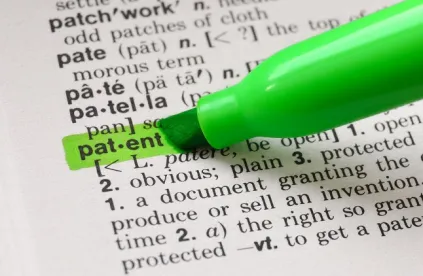When faced with an instituted IPR, the Patent Owner should include all arguments it wishes to preserve for appeal in its Patent Owner Response (“POR”), including arguments that the Patent Owner believes are unlikely to succeed before the Board but may be attractive to the Federal Circuit. Otherwise, the argument will be deemed waived and unavailable in any subsequent appeal. That includes arguments made in the optional preliminary response which are waived if they are not renewed in the POR. After the POR phase, the Patent Owner is unlikely to have another opportunity, because the sur-reply is limited to responding to arguments made in the Petitioner’s reply. See e.g., Google LLC v. Uniloc 2017 LLC, IPR2020-00447, Paper 21 at 9-10 n. 6 (May 11, 2021) (finding that since the Patent Owner did not renew its pre-institution argument in the POR, the Patent Owner waived the argument and could not raise it in a sur-reply). That may or may not include arguments originally made in the Petition. Accordingly, a Patent Owner should make sure that all responsive arguments are included in the POR, otherwise it will very likely be unavailable in any subsequent appeal.
While Patent Owners have the option of responding to arguments made in an IPR petition prior to institution in the preliminary response, they should not plan to rely on any of those post-institution. After the Board has determined that a trial should take place, the Patent Owner responds with the POR, and a clean slate. That is because arguments made in the (optional) preliminary response have no effect after institution and there is no waiver of arguments that are not raised. This leaves Patent Owners in the position to pick and choose at the preliminary response phase and raise as many or as few issues as desired without being precluded from raising new arguments post-institution. But Patent Owners are not likely to have any second chances after the POR, and crafty Petitioners will be wise to not re-raise issues in the Petitioner’s Reply that went unaddressed by the Patent Owner in the POR.
This all makes the POR the Patent Owner’s only opportunity to rebut any and all arguments made in the Petition and ultimately preserve those issues for appeal. See In re NuVasive, 842 F.3d 1376, 1380-81 (Fed. Cir. 2016) (finding patent owner waived arguments made in its preliminary response, but omitted in its POR); see also SAP Am., Inc. v. Versata Dev. Group, Inc., CBM2012-00001, Paper 81 at 2-4 (Sept. 13, 2013) (finding that Versata waived arguments on appeal, including whether § 101 is a permissible basis for review, because arguments were not made in the POR; “A request for rehearing of a final decision is not an opportunity for a party to raise issues that were waived.”). Post-institution, if the Patent Owner does not include an argument in its POR, the argument will be deemed waived.
An example of when this may occur is where a Patent Owner proposes a dispositive claim construction in the preliminary response, but the Board soundly rejects that construction in its institution decision. If the Patent Owner believes its claim construction issue may present a winnable issue on appeal, it should renew and press that claim construction argument in the POR, even if the Board is almost certain to reject it again in the final written decision. Otherwise, that potentially winnable argument will be waived and unavailable on appeal. Accordingly, Patent Owners should adopt a use it or lose approach with the POR, and ensure that any and all arguments that the Patent Owner may wish to raise before the Federal Circuit are made and properly preserved for appeal.





 />i
/>i
